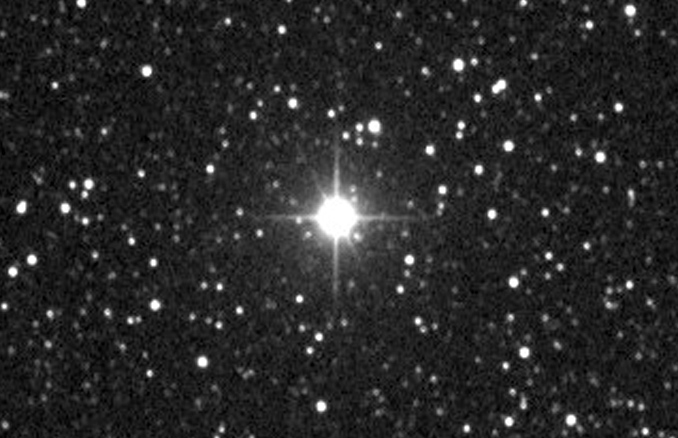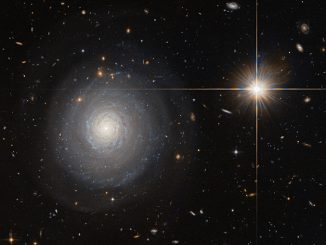A relatively bright nova was discovered on 12 June in the northern constellation of Hercules (Nova Her 2021). Within just a few hours of its discovery it had brightened by around two magnitudes to reach magnitude +6.4, an easy target for a pair of 10×50 binoculars. Despite the perpetual twilight plaguing nights at this time of the year, observers shouldn’t have any difficulty in viewing the nova, which lies around 40 degrees up in the east-south-east by 11.30pm BST.

Nova Her 2021 lies at the precise position RA 18h 57m 31s, Dec +16° 53′ 40″ (J2000.0), which places it in the far south-eastern reaches of Hercules, right on its boundary with Aquila, to the north-west of bright Altair (alpha [α] Aquilae [Aql]). The closest naked-eye star to the nova is magnitude +5.3 HIP 93124 (SAO 104296), which is located just over half a degree to the north-east. HIP 93124 sits close to the pairing of magnitude + 3 zeta (ζ) Aql and magnitude +4 epsilon (ε) Aql, which lies 2.3 degrees north-west of the latter.

Nova Her 2021 was discovered shining at magnitude +8.4 by Seiji Ueda, Kushiro, Hokkaido, Japan, on three six-second exposures (limiting magnitude +13.0) taken using a Canon EOS 6D digital camera and a 200mm, f/3.2 lens. Subsequent frames taken on June 12.548 UT (~13h) through a 160mm, f/6.3 reflector confirmed the nova shining at magnitude +8. Around two hours later (at 12.642) Andrew Pearce, observing from Nedlands, Australia, observed the nova visually at magnitude + 6.4. Professional astronomers followed up quickly by spectroscopically confirming the suspect object as a nova of unusually large velocity.
Novae are short-lived outbursts from aged binary star systems in which gas piles up onto a white dwarf from a companion star, igniting a thermonuclear reaction on the white dwarf and an explosion on its surface that is violent enough to be seen across the Galaxy. We see the sudden appearance of a ‘new’ (nova is Latin for ‘new’) star.
The behaviour of many novae is notoriously unpredictable and fascinating to follow. Observations of Nova Her 2021 are highly encouraged, especially as it appears to have been discovered at an early stage. Nova Cas 2021, discovered in March this year, has been on a bit of a brightness rollercoaster. It brightened rapidly to naked-eye prominence (peaking visually at around magnitude +4.5) in early May and then faded steadily until a shallower, secondary peak occurred early this month; the most recent observations reveal Nova Cas 2021 is fading again (visual magnitude +7.2).



